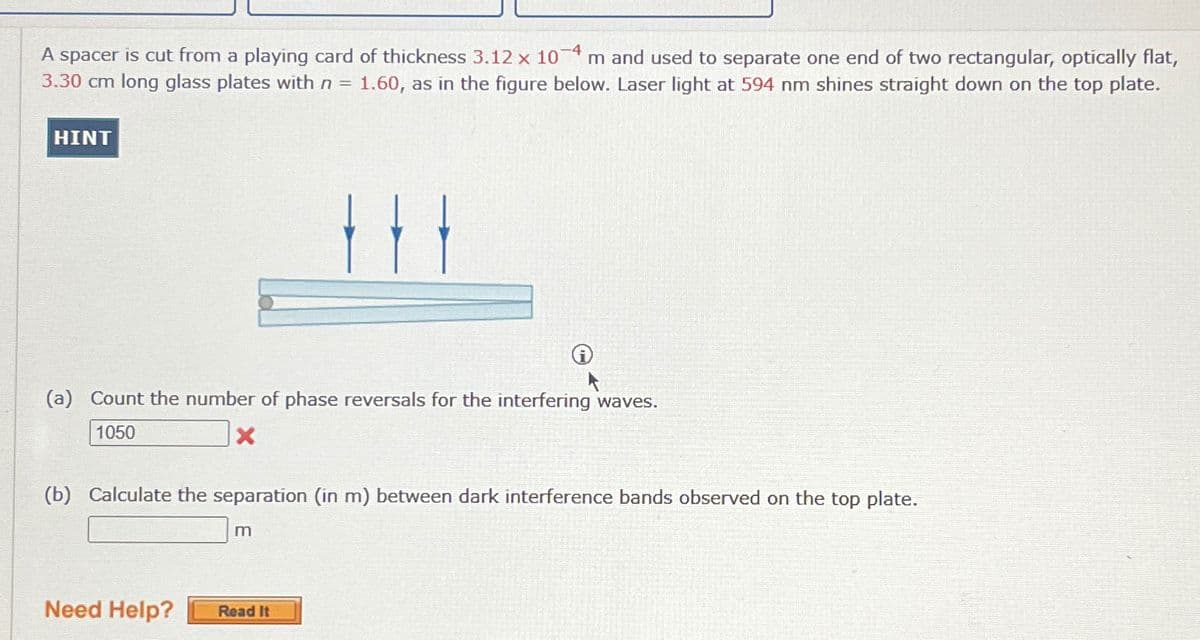A spacer is cut from a playing card of thickness 3.12 x 104 m and used to separate one end of two rectangular, optically flat, 3.30 cm long glass plates with n = 1.60, as in the figure below. Laser light at 594 nm shines straight down on the top plate. HINT (a) Count the number of phase reversals for the interfering waves. 1050 (b) Calculate the separation (in m) between dark interference bands observed on the top plate. m Need Help? Read It
A spacer is cut from a playing card of thickness 3.12 x 104 m and used to separate one end of two rectangular, optically flat, 3.30 cm long glass plates with n = 1.60, as in the figure below. Laser light at 594 nm shines straight down on the top plate. HINT (a) Count the number of phase reversals for the interfering waves. 1050 (b) Calculate the separation (in m) between dark interference bands observed on the top plate. m Need Help? Read It
Related questions
Question
Needs Complete solution with 100 % accuracy don't use chat gpt or ai i definitely upvote you.

Transcribed Image Text:A spacer is cut from a playing card of thickness 3.12 x 104 m and used to separate one end of two rectangular, optically flat,
3.30 cm long glass plates with n = 1.60, as in the figure below. Laser light at 594 nm shines straight down on the top plate.
HINT
(a) Count the number of phase reversals for the interfering waves.
1050
(b) Calculate the separation (in m) between dark interference bands observed on the top plate.
m
Need Help?
Read It
Expert Solution
This question has been solved!
Explore an expertly crafted, step-by-step solution for a thorough understanding of key concepts.
This is a popular solution!
Trending now
This is a popular solution!
Step by step
Solved in 2 steps
